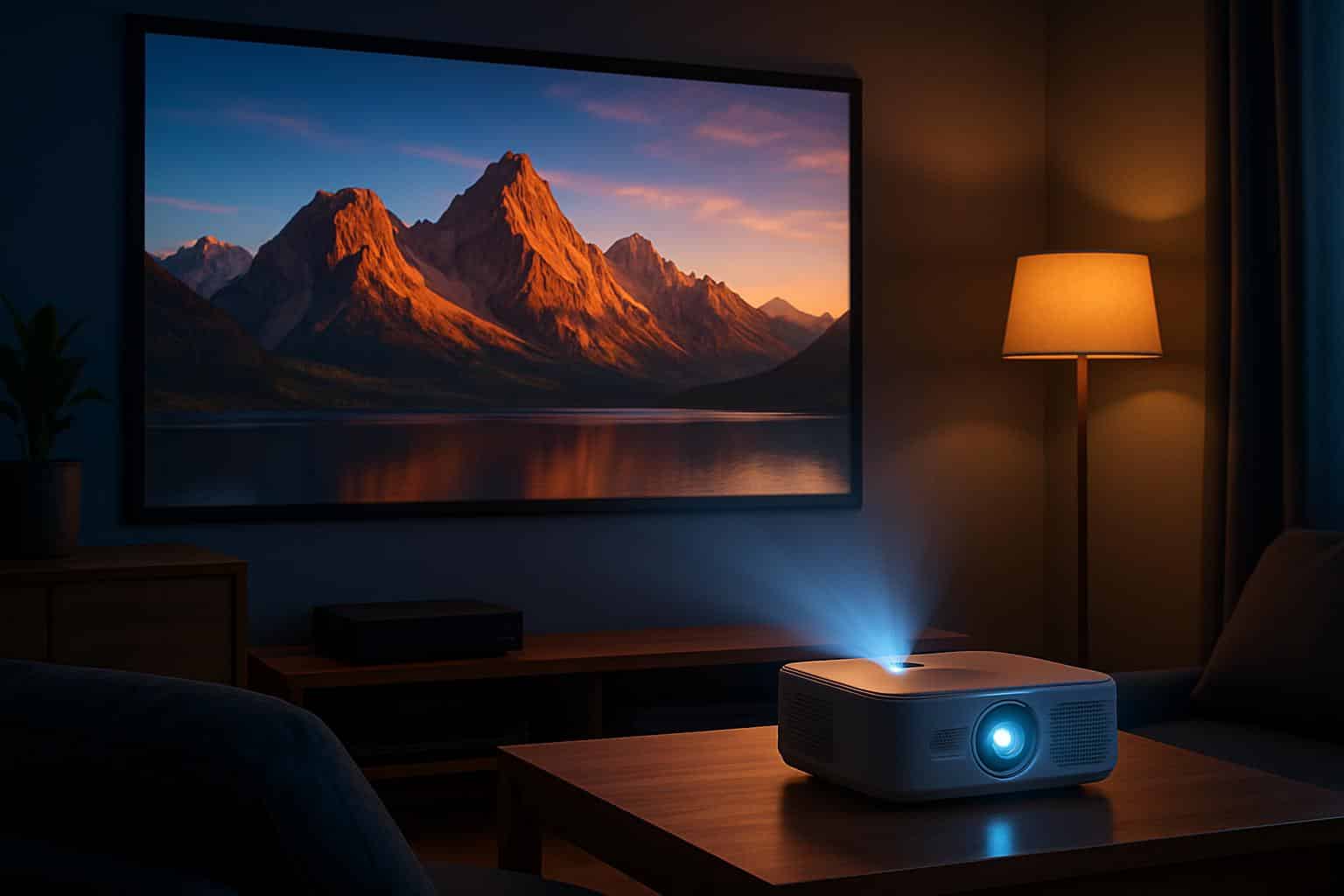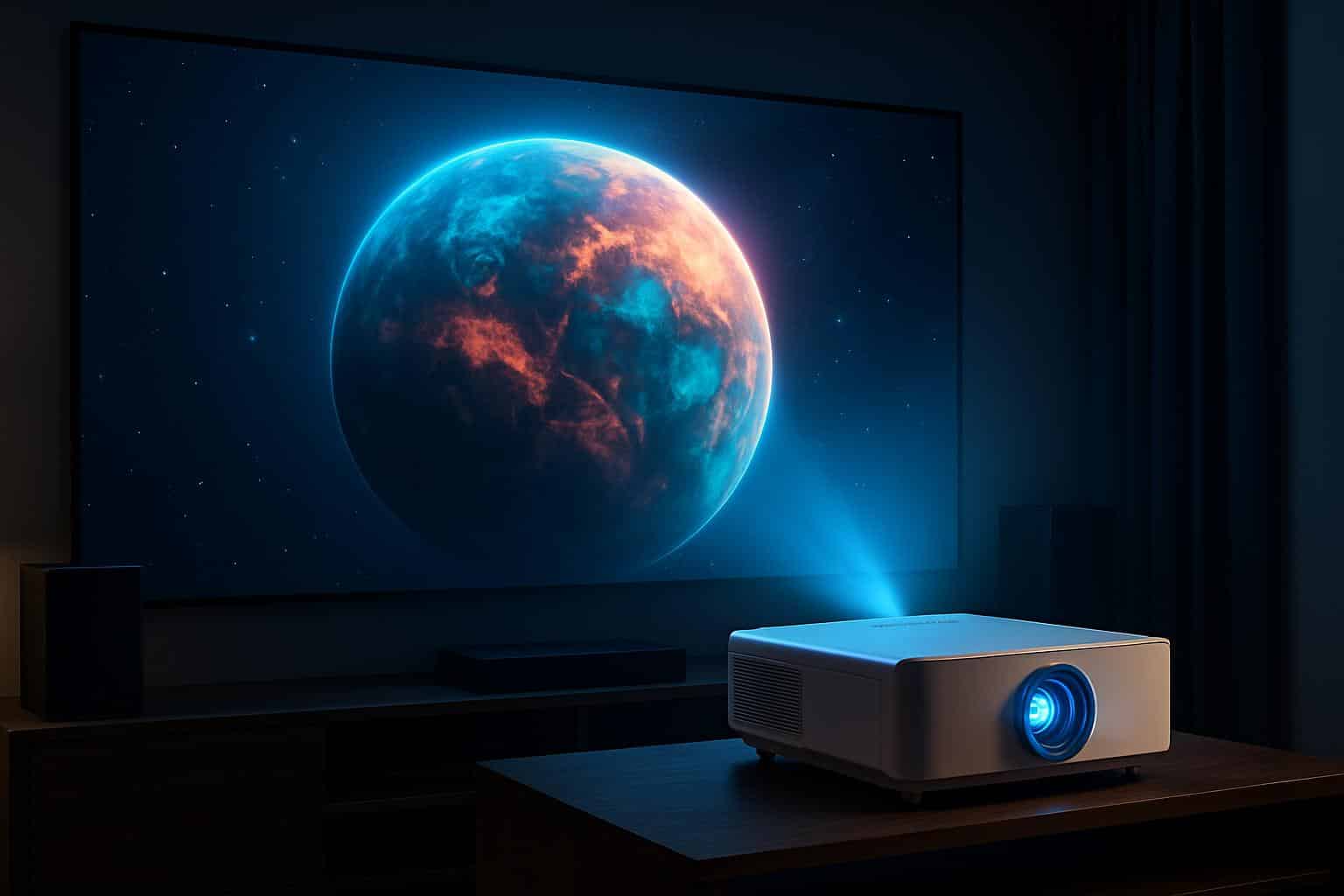The best projector deals aren’t simply about the lowest sticker price but about finding the right balance of brightness, resolution, and throw to get what you need in a room without overpaying for marketing nonsense. With sales and even more sales on 1080p portables, true 4K beamers, or the latest ultra short throw laser behemoths, value-focused home theater hopefuls can get a whole lot for their money.
Here’s a down-to-earth guide to the strongest value tiers and ways to distinguish between tangible savings and hype, using benchmarking standards from ANSI, SMPTE measurement protocols, and measurement insights commonly repeated by labs like ProjectorCentral and AVS Forum communities.
- How to Tell If Your Projector Deal Is Real
- The Sweet Spots by Category for Today’s Projector Deals
- Specs That Truly Make a Difference During Sales Events
- Where Projector Prices Usually Dip Throughout the Year
- Real-World Examples to Track for Projector Savings
- Expert-Backed Buying Checklist for Better Projector Deals

How to Tell If Your Projector Deal Is Real
Start with the discount-to-spec ratio. Discounts on portable 1080p LED models are usually in the 15–30% range; midrange lamp or LED/laser 4K projectors hit in the 20–35% range; premium triple-laser USTs can go for as much as a 20–30% discount during big sales events. Steam does not have a price tracker, so follow these associations and consider them whenever you make a purchase. If the “deal” falls below those bands … push for it to be even lower, via price match.
Check the brightness claim type. ANSI lumens are standardized; “LED lumens” and other proprietary names are not. Also look for a color brightness figure in addition to its white brightness level—if color lumens are way lower, that means HDR content can appear washed out. You want to cite the American National Standards Institute’s ANSI method.
Finally, verify the MSRP. Stores will sometimes anchor “40% off” to a seldom-used list price. Rely on historical pricing from reputable trackers and manufacturer pages, and look to independent reviews from established outlets for confirmation of performance.
The Sweet Spots by Category for Today’s Projector Deals
1080p portable LED: These are the travel-friendly projectors that you can drop in a bag. Seek out auto keystone and autofocus, a minimum 400–800 ANSI lumens and battery playback. Adding a decent smart TV system makes for an even better value. Models from the likes of Anker Nebula, Xgimi and ViewSonic tend to be good performers that become particularly compelling picks when cases or screens are thrown in.
Midrange 4K (pixel-shift DLP or 3LCD): The best value for living rooms. Look for projectors with brightness ratings around 2,000–3,000 ANSI lumens (as always, check reviews or test performance in a shop if you can), find projectors with low input lag below 20–25ms if you’re planning to game on a console, and look for wide color coverage (full Rec. 709 and as much of DCI-P3 as the set can harvest). Otherwise, popular value picks from BenQ, Epson and Optoma tend to drop a meaningful amount with big sales without compromising core image quality.
Ultra short throw laser (UST): If you like installing your equipment with zero visible wires, and having a setup that looks just like a TV does when not in use, USTs sit less than an inch from the wall and can throw 100–120 inches. Triple-laser RGB systems offer excellent color volume and brightness stability, while single-laser phosphor models are cheaper but still potent enough for multitasking spaces. Keep an eye out for HDR10 support and strong MEMC on the sports front, as well as decent built-in speakers. Brands like Hisense, AWOL Vision and LG pop up frequently with bundle deals featuring ALR screens.
Gaming-first projectors: Look for 1080p/240Hz or 4K/60Hz with measured input lag, ideally lower than 16ms. Some LED and laser models boast game modes that really do slash lag; cross-check this where possible with independent measures.
BenQ’s gaming line and some Xgimi models are often standouts during sales.

Specs That Truly Make a Difference During Sales Events
Brightness vs screen size: SMPTE suggests an optimal brightness of about 16 foot-lamberts for SDR (standard dynamic range) cinema viewing. As a rough guide, many people usually require about 1,500–2,000 ANSI lumens for a 120-inch diagonal image in a room where they can control the light level (and more if it will be even partially lit) or with ALR screens. With HDR, higher lumens increases highlight pop, even though projectors can’t hit TV-level nits.
Throw ratio and placement: Short-throw and UST options can save you space; standard-throw lenses tend to have better uniformity and are cheaper per lumen. Make sure your room depth matches the manufacturer’s throw calculator, and find out if lens shift and zoom capabilities offer enough flexibility for safe mounting.
Color and contrast: Wide color gamuts (DCI-P3) and real native contrast are more important than marketing claims about “dynamic” contrast. For most buyers, accurate Rec. 709 out of the gate is a big plus; serious tinkerers can calibrate, but robust presets cut down on that need. References from calibration pros and standards bodies like SMPTE can help you separate fact from fiction.
Where Projector Prices Usually Dip Throughout the Year
The biggest discounts are always generated by major retail events. Industry trackers like Circana have long observed that consumer electronics are discounted most steeply around the biggest shopping moments. Look for closeout pricing as new lines roll in, especially on midrange 4K sets and USTs with updated chipsets.
Watch bundles. Once you’ve added all the peripherals, a good price becomes best in class when it comes to ambient light rejection screens, ceiling mounts, streaming sticks and other extras. Consumer advocates often recommend comparing cart totals and not just headline percentages before you pull the trigger.
Real-World Examples to Track for Projector Savings
Value 4K DLP with gaming chops: Models marketed as “cinema and console” generally land at or below that sub-25ms target lag while also delivering accurate Rec. 709 color and 2,000+ lumens. And when those drop a couple hundred bucks, generally they are the best all-around living room buys.
Triple-laser UST with ALR screen: High-end bundles occasionally bust mid-tier TV pricing—while delivering 100–120 inches, wide color and strong built-in audio. If said deal features installation-grade ALR and a current-gen streaming platform, you’d have to consider that one of the best deals around.
1080p LED portables with Google TV or equivalent: Ideal promos are those that offer 600–1,000 ANSI lumens plus autofocus, a quiet fan and playback via battery. These are backyard or bedroom projectors that often cost less than their smart TV counterparts at similar sizes.
Expert-Backed Buying Checklist for Better Projector Deals
- Match brightness and throw to your room first; specs that you can’t use aren’t a deal. Reference the manufacturer’s throw chart and target SMPTE-level brightness with your screen size.
- Verify standardized metrics. Just said a bit ago: prefer ANSI lumens, input lag measurements and believable color coverage claims. Find reviews that segment white and color brightness testing separately, and report on uniformity.
- Prioritize total value. A small reduction in price on a model with an ALR screen, lens shift or better speakers can be worth more to you than a deeper discount on a bare-bones unit. When in doubt, trust independent lab tests and enthusiast forums that publish measurements, not marketing copy.
- The bottom line: The best projector deals should offer a balanced combination of brightness, color accuracy, low input lag and placement flexibility at an attractive price that’s close to verified market lows. Follow the advice above, have patience and end up with some theater-quality picture without overspending.

